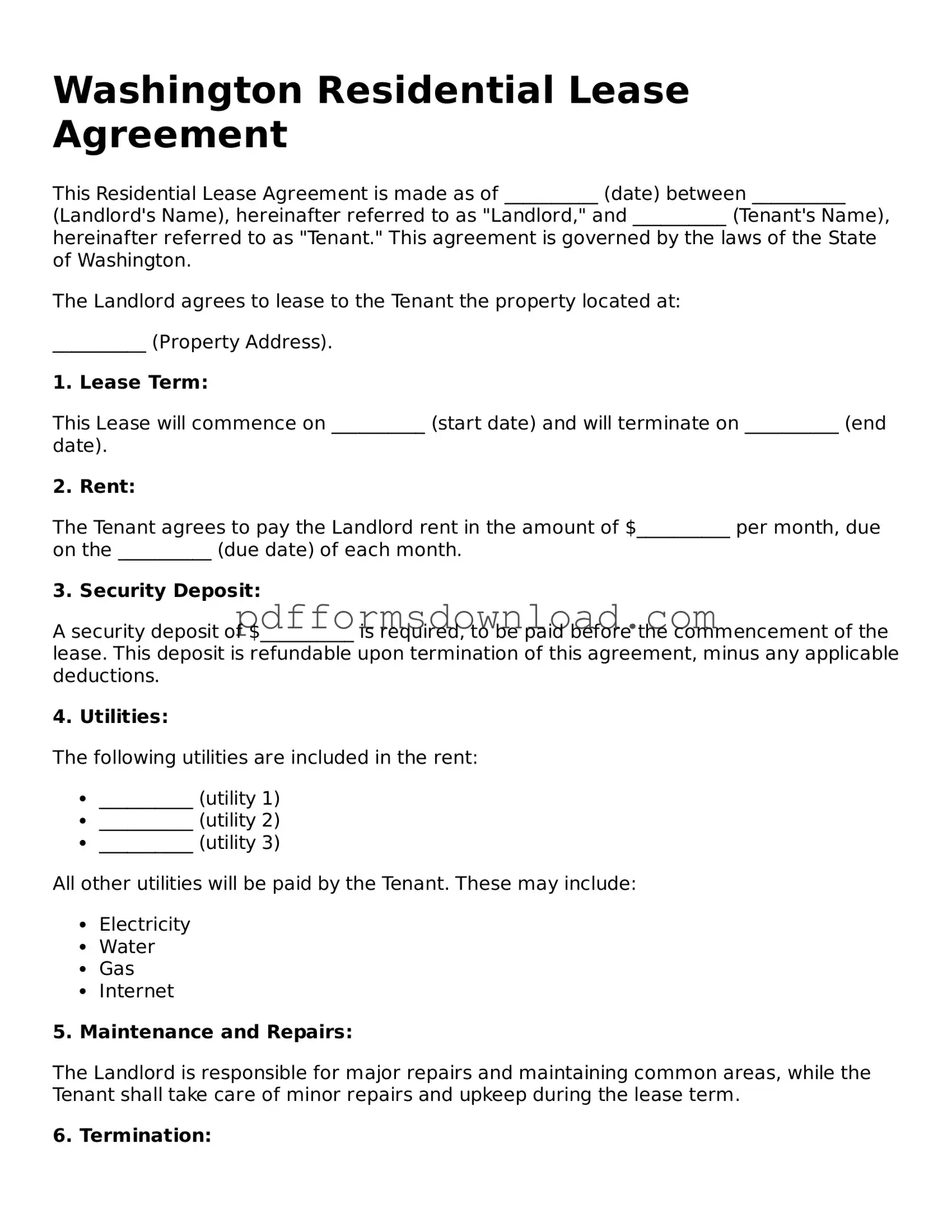What is a Washington Lease Agreement?
A Washington Lease Agreement is a legal document that outlines the terms and conditions under which a landlord rents property to a tenant in the state of Washington. This agreement protects the rights of both parties and includes essential details such as rental amount, duration of the lease, and responsibilities for maintenance and repairs.
What should be included in a Washington Lease Agreement?
Key components of a Washington Lease Agreement typically include the names of the landlord and tenant, property address, lease duration, rent amount and payment schedule, security deposit details, and rules regarding pets or smoking. Additionally, it’s important to specify who is responsible for utilities and maintenance tasks.
How long does a lease last in Washington?
In Washington, leases can vary in duration. They can be short-term, lasting just a few months, or long-term, extending for a year or more. The specific duration should be clearly stated in the lease agreement. If the lease is not renewed, it may convert to a month-to-month tenancy unless otherwise specified.
What is a security deposit, and how is it handled?
A security deposit is a sum of money that a tenant pays to the landlord at the beginning of the lease. It serves as a financial safeguard for the landlord against damages or unpaid rent. In Washington, landlords can charge a security deposit, but they must provide a written receipt and return the deposit within 21 days after the tenant moves out, minus any deductions for damages or unpaid rent.
Can a landlord enter the rental property without notice?
No, in Washington, landlords cannot enter a tenant’s rental property without proper notice. Generally, they must provide at least 48 hours' written notice before entering, except in emergencies. This rule helps protect the tenant’s right to privacy and ensures that landlords respect their space.
What happens if a tenant breaks the lease?
If a tenant breaks the lease, they may face certain consequences. Depending on the terms outlined in the lease agreement, the landlord may keep the security deposit or charge the tenant for any lost rent until a new tenant is found. It’s advisable for tenants to communicate with their landlord to discuss options and avoid potential legal issues.
Are there any specific laws that govern lease agreements in Washington?
Yes, Washington has specific laws that govern lease agreements, including the Residential Landlord-Tenant Act. This law outlines the rights and responsibilities of both landlords and tenants, ensuring fair treatment and legal protection. It's essential for both parties to familiarize themselves with these laws to understand their rights and obligations under the lease.
